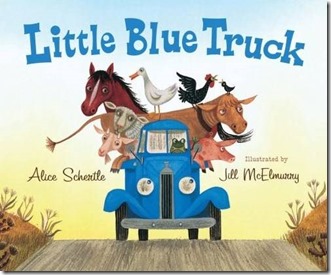A Public Speaking Lesson From My Eight-Month-Old Son
One of my favorite treats is to read a delightful children’s book to my eight-month-old son called Little Blue Truck.
The book, about a little blue truck that makes friends with farm animals who help it get unstuck from a muddy patch in a country road, teaches a great lesson about forming friendships.
Part of what makes the book so fun to read is that it allows me to perform animal sounds—Mooooo! Baaahhh! Cluck! I get rather engaged in my performances, giving dramatic readings intended to earn an occasional smile from my little boy.
A few nights ago, I had barely made it to the middle of the book before my son started squirming out of my arms. I was determined to make it through the book, so I amped up my performance to regain his attention. He continued to squirm, getting increasingly agitated, and then I finally had an (admittedly obvious) insight: “Wait! I’m not the audience. He is!”
I had become so enamored with reading the book to my son that I had forgotten who the audience for the activity was.
That’s a lesson many presenters can learn from. Too often, they’re so enamored with something they’re talking about—a detailed and barely related point, a “you-had-to-be-there story,” or a personal pet project—that they forget who their real audience is and what they care about.
So remember your audience. Trim your presentations of what behavior change specialist Jerry Sternin dubbed “TBUs”—“true but useless” facts. And if you find yourself beginning to ramble, activate a voice in the back of your mind that pointedly asks, “Is this directly related to my main point?” If not, remind yourself of the lesson I relearned while reading to my son: “Wait! I’m not the audience. They are!”
If you enjoyed this article, would you please help me reach a larger audience by sharing it with your social networks? Share buttons are below. Thank you!



